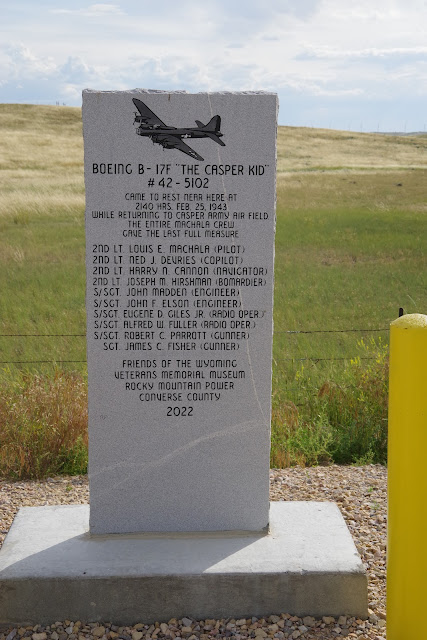Sunday, February 20, 1944. The Big Week.
Today in World War II History—February 20, 1944: Allies launch Operation Argument (“Big Week”), a week-long aerial attack of 6000 sorties which devastates the German aircraft industry.
Sarah Sundin.
For the first time, one of the features of the daylight portions of the bombing raids was to draw German fighters into combat, a change in strategy. The six-day offensive would see heavy German fighter losses, but Allied bomber crew losses were nearly ten times higher.
Two Medals of Honor were awarded to crewmen killed attempting to land their bomber and save the life of stricken pilot they would not abandon.
Walter E. Truemper.
For conspicuous gallantry and intrepidity at the risk of life above and beyond the call of duty in action against the enemy in connection with a bombing mission over enemy-occupied Europe on 20 February 1944. The aircraft on which 2d Lt. Truemper was serving as navigator was attacked by a squadron of enemy fighters with the result that the copilot was killed outright, the pilot wounded and rendered unconscious, the radio operator wounded, and the plane severely damaged. Nevertheless, 2d Lt. Truemper and other members of his crew managed to right the plane and fly it back to their home station, where they contacted the control tower and reported the situation. Second Lt. Truemper and the engineer volunteered to attempt to land the plane. Other members of the crew were ordered to jump, leaving 2d Lt. Truemper and the engineer aboard. After observing the distressed aircraft from another plane, 2d Lt. Truemper's commanding officer decided the damaged plane could not be landed by the inexperienced crew and ordered them to abandon it and parachute to safety. Demonstrating unsurpassed courage and heroism, 2d Lt. Truemper and the engineer replied that the pilot was still alive but could not be moved and that they would not desert him. They were then told to attempt a landing. After two unsuccessful efforts their plane crashed into an open field in a third attempt to land. Second Lt. Truemper, the engineer, and the wounded pilot were killed.
Archibald Mathies
For conspicuous gallantry and intrepidity at the risk of life above and beyond the call of duty in action against the enemy in connection with a bombing mission over enemy-occupied Europe on 20 February 1944. The aircraft on which Sgt. Mathies was serving as engineer and ball turret gunner was attacked by a squadron of enemy fighters with the result that the copilot was killed outright, the pilot wounded and rendered unconscious, the radio operator wounded, and the plane severely damaged. Nevertheless, Sgt. Mathies and other members of the crew managed to right the plane and fly it back to their home station, where they contacted the control tower and reported the situation. Sgt. Mathies and the navigator volunteered to attempt to land the plane. Other members of the crew were ordered to jump, leaving Sgt. Mathies and the navigator aboard. After observing the distressed aircraft from another plane, Sgt. Mathies' commanding officer decided the damaged plane could not be landed by the inexperienced crew and ordered them to abandon it and parachute to safety. Demonstrating unsurpassed courage and heroism, Sgt. Mathies and the navigator replied that the pilot was still alive but could not be moved and they would not desert him. They were then told to attempt a landing. After two unsuccessful efforts, the plane crashed into an open field in a third attempt to land. Sgt. Mathies, the navigator, and the wounded pilot were killed.
Lt. William R. Lawley Jr. wouldn't abandon his crewmen, but managed to come out of it alive.
For conspicuous gallantry and intrepidity in action above and beyond the call of duty, 20 February 1944, while serving as pilot of a B-17 aircraft on a heavy bombardment mission over enemy-occupied continental Europe. Coming off the target he was attacked by approximately 20 enemy fighters, shot out of formation, and his plane severely crippled. Eight crewmembers were wounded, the copilot was killed by a 20-mm. shell. One engine was on fire, the controls shot away, and 1st Lt. Lawley seriously and painfully wounded about the face. Forcing the copilot's body off the controls, he brought the plane out of a steep dive, flying with his left hand only. Blood covered the instruments and windshield and visibility was impossible. With a full bomb load the plane was difficult to maneuver and bombs could not be released because the racks were frozen. After the order to bail out had been given, 1 of the waist gunners informed the pilot that 2 crewmembers were so severely wounded that it would be impossible for them to bail out. With the fire in the engine spreading, the danger of an explosion was imminent. Because of the helpless condition of his wounded crewmembers 1st Lt. Lawley elected to remain with the ship and bring them to safety if it was humanly possible, giving the other crewmembers the option of bailing out. Enemy fighters again attacked but by using masterful evasive action he managed to lose them. One engine again caught on fire and was extinguished by skillful flying. 1st Lt. Lawley remained at his post, refusing first aid until he collapsed from sheer exhaustion caused by loss of blood, shock, and the energy he had expended in keeping control of his plane. He was revived by the bombardier and again took over the controls. Coming over the English coast 1 engine ran out of gasoline and had to be feathered. Another engine started to burn and continued to do so until a successful crash landing was made on a small fighter base. Through his heroism and exceptional flying skill, 1st Lt. Lawley rendered outstanding distinguished and valorous service to our Nation.
He died in 1999 at age 78.















































.jpeg)



